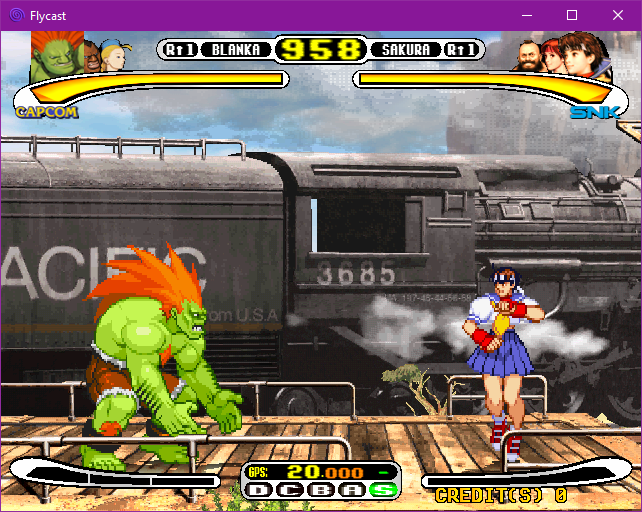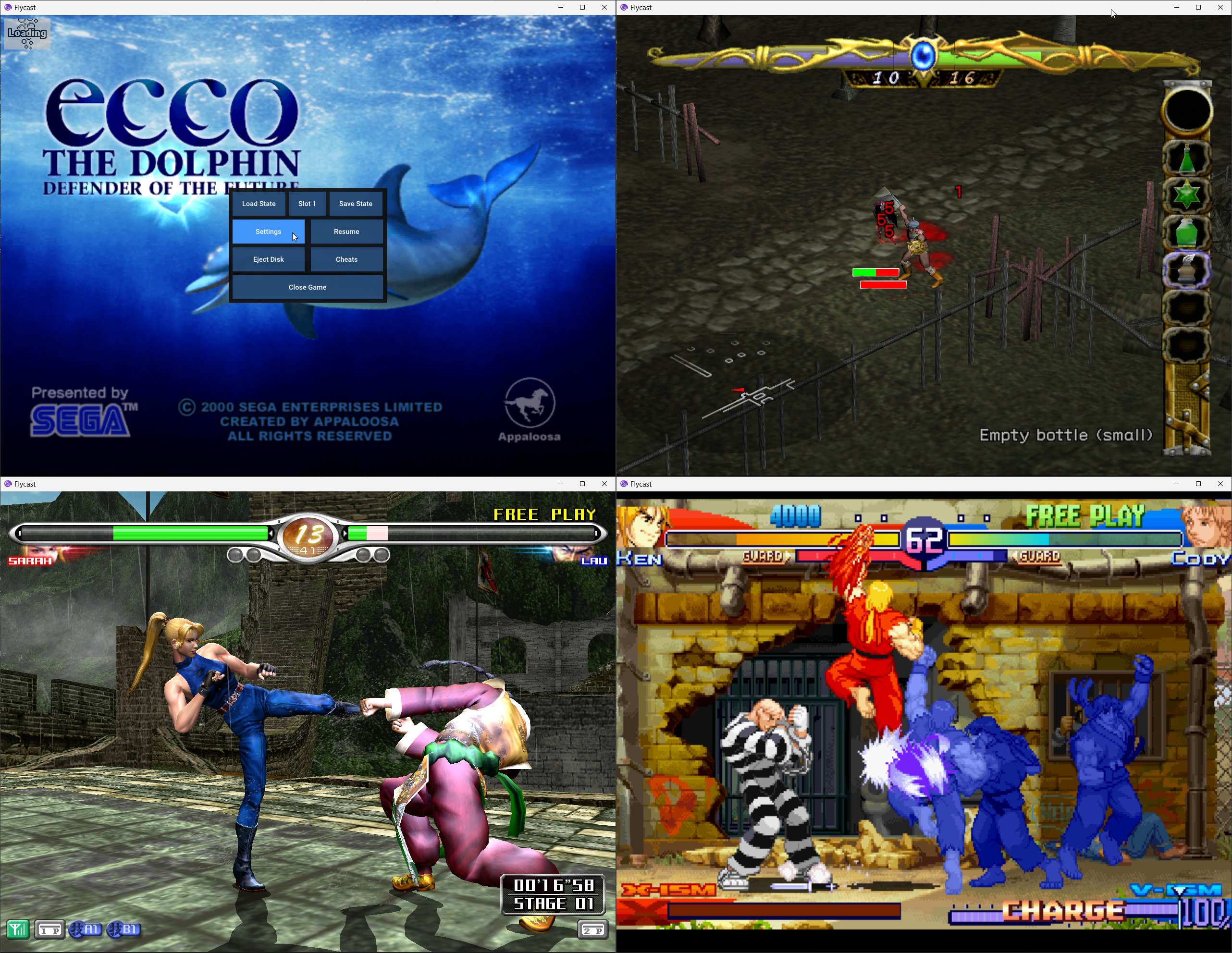Il s’agit d’un émulateur Game Boy écrit en Python.

Les changements sont les suivants:
– A lot of general fixes
– Improved documentation with examples
– pyboy.tick(10, True) now takes two optional parameters:
. n number of frames to progress
. render whether to render the screen on the last processed frame
– pyboy.screen_image() moved to pyboy.screen.image
– The « botsupport » module has been removed, and most of API is moved to the PyBoy object
– pyboy.button(‘a’) can be used to send input, and will automatically release after 1 frame
– pyboy.button_press(‘a’) allows for manual control of input
– pyboy.button_release(‘a’) allows for manual control of input
– pyboy.memory[0x100:0x150] = 123 replaces all three pyboy.get/set/override_memory_value and extends it with an option to specify bank
– pyboy.hook_register(bank, address, callback, context) registers a callback at a specific point in your game. Used for fine-grained tracking of events and control of the game
– pyboy.symbol_lookup(symbol) to look up address for a symbol to use with memory read/write
“dummy” and “headless” windows have been merged into “null” window because of the new pyboy.tick
– pyboy.game_wrapper Game wrappers are now automatically loaded and accessible through the game_wrapper property
– Remove fitness scores from game wrappers
– pyboy.game_area() is a shortcut for pyboy.game_wrapper.game_area()
– pyboy.game_area_collision() is a shortcut for pyboy.game_wrapper.game_area_collision()
– pyboy.game_area_dimensions(…) can be used to configure game_area
– pyboy.game_area_mapping(…) can apply a mapping to all game area tiles. I.e. simplify the tiles, or zero-out uninteresting tiles
– OpenAI Gym/Gymnasium has been removed from PyBoy. It will be replaced by an example on the Wiki instead
– pyboy.memory_scanner allows to isolate memory address of interest
– Support for 768 CGB tiles vs. 384 in DMG mode
Flycast est un émulateur multiplateforme de Sega Dreamcast, Naomi 1 & 2, Sega SystemSP et Atomiswave qui est basé sur Reicast. Informations ici.



Il prend en charge les jeux aux formats suivants:
– SEGA Dreamcast (CHD, CDI, GDI, CUE)
– SEGA Dreamcast utilisant WinCE
– SEGA NAOMI / NAOMI 2 (.zip, .7z, .dat/.lst)
– SEGA NAOMI / NAOMI 2 GD-ROM (.zip, .7z, .dat/.lst et .chd)
– Jeux NAOMI décryptés (.bin, non recommandé)
– Sammy Atomiswave (.zip, .7z)
– SEGA System SP (.zip, .7z, .dat/.lst et .chd)
Il ne prend pas encore en charge les jeux Hikaru.
Des packs de textures sont disponibles ici.
Les changements majeurs depuis la v2.2:
What’s New
– Battle Cable support
– SystemSP hopper games: kingyo, manpuku, shateki, magicpop, unomedal, puyomedal, ochaken and westdmrg
– Club Kart card reader support
– Gamepad dead zone and saturation settings
– Switch: touchscreen and joycon rumble support, bug fixes, performance improvements
– HID barcode scanner support for card games (Mushi King, Dinosaur King, Love & Berry)
Fixed Games
– Initial D v2/v3
– Melty Blood: Act Cadenza
– Confidential Mission
– The Maze of the Kings
– Spikers Battle
– NBA Showtime
– NHL 2K2
– Ready 2 Rumble Boxing
– Monkey Ball
– Crackin’DJ 1 and 2
– F355 (Naomi)
– Samurai Shodown VI
– Shenmue
– Test Drive Le Mans
– Sakura Taisen 3
– Death Crimson 2
– Force Five
– NHL 2K2
– Shakatto Tambourine
– Xtreme Sports
– Blue Stinger
– RevolveR
– Kaen Seibo
– Nittere Shiki! Mirai Yosou Studio
– Shakatto Tambourine Arcade
EmulationStation Desktop Edition (ES-DE) est une interface utilisateur pour parcourir et lancer des jeux à partir de votre collection de jeux multiplateformes.
Il est préconfiguré pour être utilisé avec RetroArch et un certain nombre d’autres émulateurs. Il est également entièrement personnalisable afin que vous puissiez facilement l’étendre pour lancer des émulateurs ou des applications qui ne sont pas inclus dans la configuration groupée. ES-DE est gratuit et open source et le restera pour toujours.
Il est également multiplateforme et fonctionne sur de nombreux systèmes d’exploitation tels que Ubuntu, Linux Mint, Manjaro, Fedora, FreeBSD, macOS et Windows.
Télécharger EmulationStation Desktop Edition v3.2.0 (116 Mo)
Mesa3D peut être utilisé pour fournir un moteur de rendu Software aux applications OpenGL et est particulièrement utile pour exécuter d’anciennes applications et jeux qui utilisent une ancienne version d’OpenGL et qui ne fonctionnent pas correctement sur du matériel moderne.
Ces binaires (créés par pal1000) remplacent les précédents de Federico Dossena car pour des raisons techniques, ces derniers n’ont pu évoluer depuis la version 20.1.8.

Différences entre les packages MSVC et MinGW:
– Le package MinGW nécessite un processeur avec SSSE3 et à l’avantage de fournir une amélioration des performances de 3 à 5% avec les pilotes de rendu logiciel.
– Le package MinGW utilise ZSTD pour certaines tâches de compression depuis la version 20.1.8.
– GLonD3D12 introduit dans la version 21.0.0 n’est disponible que dans le package MSVC.
– L’outil SPIR-V vers DXIL introduit dans la version 21.2.0 n’est disponible que dans le package MSVC.
– d3d10sw introduit dans la version 21.2.0 n’est disponible que dans le package MSVC.
– La prise en charge d’OpenCL introduit dans la version 21.3.0 n’est disponible que pour le package MSVC.
NB: Si vous avez besoin de migrer des fichiers binaires Mingw vers MSVC, il vous suffit de remplacer le dossier des fichiers binaires Mesa du package Mingw par l’homologue MSVC.
Site de développement.
Télécharger Mesa3D MSVC (x86/x64) v25.1.3 (61.0 Mo)
A l’instar de MAMEinfo pour MAME(Arcade), le fichier MESSinfo vous permet de suivre les changements entre les versions concernant les différents systèmes émulés par MAME (partie consoles et ordinateurs).

Il s’agit du meilleur émulateur de PlayStation One, devant ePSXe et pSX.

Caractéristiques:
– CPU Recompiler/JIT (x86-64, armv7/AArch32, AArch64, RISC-V/RV64).
– Hardware (D3D11, D3D12, OpenGL, Vulkan, Metal) and software rendering.
– Upscaling, texture filtering, and true colour (24-bit) in hardware renderers.
– PGXP for geometry precision, texture correction, and depth buffer emulation.
– Adaptive downsampling filter.
– Post processing shader chains (GLSL and experimental Reshade FX).
– « Fast boot » for skipping BIOS splash/intro.
– Save state support.
– Windows, Linux, macOS support.
– Supports bin/cue images, raw bin/img files, MAME CHD, single-track ECM, MDS/MDF, and unencrypted PBP formats.
– Direct booting of homebrew executables.
– Direct loading of Portable Sound Format (psf) files.
– Digital and analog controllers for input (rumble is forwarded to host).
– Namco GunCon lightgun support (simulated with mouse).
– NeGcon support.
– Qt and « Big Picture » UI.
– Automatic updates with preview and latest channels.
– Automatic content scanning – game titles/hashes are provided by redump.org.
– Optional automatic switching of memory cards for each game.
– Supports loading cheats from existing lists.
– Memory card editor and save importer.
– Emulated CPU overclocking.
– Integrated and remote debugging.
– Multitap controllers (up to 8 devices).
– RetroAchievements.
– Automatic loading/applying of PPF patches.
Configuration requise:
– Windows 10/11 (7/8/8.1 here), Linux (AppImage/Flatpak), macOS.
– A CPU faster than a potato. But it needs to be x86_64, AArch32/armv7, AArch64/ARMv8, or RISC-V/RV64.
– For the hardware renderers, a GPU capable of OpenGL 3.1/OpenGL ES 3.1/Direct3D 11 Feature Level 10.0 (or Vulkan 1.0) and above. So, basically anything made in the last 10 years or so.
– SDL, XInput or DInput compatible game controller (e.g. XB360/XBOne/XBSeries). DualShock 3 users on Windows will need to install the official DualShock 3 drivers included as part of PlayStation Now.

Les améliorations sont:
Preview Build:
– Make interrupts actually edge-triggered (Stenzek)
– Properly handle bus errors and DICR transitions (Stenzek)
– More PGXP CPU traits (Stenzek)
Stable Build (or rolling release):
– Inhibit debug dispatcher when COP0 BP is invalid (Stenzek)
– 95486f7: House cleaning (#3083) (Anderson Cardoso) #3083
– fcbae6c: GPU/HW: Fix off-by-one in dirty rect checks (Stenzek)
– Add SDL to thirdparty.html (Stenzek)
– Log axes/buttons when controller is opened (Stenzek)
– add PS Mouse support for Discword #3085 (bl@ck_m@ge)
– 34160a8: Qt/FSUI: Backport PromptFont from PCSX2 for better readibility (KamFretoZ) #3084
– Add UserResources to EmuFolders (Stenzek)
– Add runtime resource downloading (Stenzek)
– Add runtime downloading of OSD fonts (Stenzek)
– Fix race on resize in GL/Vulkan (Stenzek)
– e86cf51: GPU/HW: Handle palette VRAM wrapping (Stenzek)
– Fix warning (Stenzek)
– e2e85a0: dep/rcheevos: Bump to 74860c9 (Stenzek)
– Display missable/progression/win icons (Stenzek)
– Open cheevo details in browser when selected (Stenzek)
– Add LayoutUnscale() (Stenzek)
– Wrap long achievement descriptions (Stenzek)
– Skip argument packing when below filter level (Stenzek)
– 4d1d830: Atualização Português do Brasil (Anderson Cardoso)
– Remove DualShock support for Chessmaster II (bl@ck_m@ge)
– cc94b76: Add debanding option to improve gradient smoothness with truecolor (Hugo Locurcio) #3089
– f369724: dep/imgui: Update to v1.90.1 (Stenzek)
– Tidy up Enhancement settings (Stenzek)
– 836e59c: CI : Use wildcard for libc downgrade (Mrlinkwii) #3090
– Make Shift+Wheel scroll settings description (Stenzek)
– 687e212: GPU/HW: Shader compile fix (Stenzek)
– bc04854: GPU/HW: Bump shader cache version (Stenzek)
– Move functionality to Host (Stenzek)
– Delete settings windows on close (Stenzek)
– Handle infinite symlink loops in FindFiles() (Stenzek)
– Allow toggling fullscreen when VM is paused (Stenzek)
– Update Korean translation by Hackjjang (Stenzek)
– Use Error class for initialization errors (Stenzek)
– Fix a couple of error log formats (Stenzek)
– Fix GTE control register disassembly (Stenzek)
– Add host/hardware stats (Stenzek)
– 543c28b: Update the Simple-Chinese Translation to latest. (zkdpower)
– Update glyph ranges (Stenzek)
– Fix Match Window on Android (Stenzek)
– Fix crash with replacement precaching (Stenzek)
– 37e8d1a: GPU/HW: Fix VRAM write replacements (Stenzek)
– daa8445: Atualização Português do Brasil (Anderson Cardoso)
– 5e2c6d2: Add independent settings for NeGcon axes (#3094) (athenavr)
– 1b8e75e: Take widescreen hack into account when determining automatic resolution scale (Hugo Locurcio)
– b7b2a50: Update the Simple-Chinese translation to latest. (zkdpower)
– 56b452d: Atualização Português do Brasil (Anderson Cardoso)
– Fix potential race between submit and main thread (Stenzek)
– Make controller settings page scrollable (Stenzek)
– Add missing display setting help text (Stenzek)
– Disable WS in Resident Evil games (Stenzek)
– ef9edb8: Update the Simple-Chinese translation to latest. (zkdpower)
– b545234: CPU/NewRec/AArch32: Fix double condition (Stenzek)
– Fix duplicated key (Stenzek)
– Add lint of GameDB (Stenzek)
– 8b656d7: Atualização Português do Brasil (Anderson Cardoso)
– 08eec2e: Update the Simple-Chinese translation to latest. (zkdpower)
– Warning fixes (Stenzek)
– Fix setting typos (Stenzek)
– 7d3d063: Update the Simple-Chinese translation to latest. (#3104) (zkdpower) #3104
– 3fd0ab3: Indonesian Translation (KamFretoZ) #3082
– 5eefbcd: Atualização Português do Brasil (#3106) (Anderson Cardoso) #3106
– a9d834c: Update the Simple-Chinese translation to latest. (zkdpower) #3105
– compatibility fixes (bl@ck_m@ge)
– Don’t clamp scale to 1.0 (Stenzek)
– Slightly improve hover/animation behavior (Stenzek)
– af2042e: GPU/HW: Fix toggling PGXP depth buffer causing black screen (Stenzek)
– Fix incorrect animation when opening state selector (Stenzek)
– Disable PGXP culling for Kingsley’s Adventure (Stenzek)
– cdea4eb: GPU/HW: Fix possible crash on setting change (Stenzek)
– cdb614a: GPU/HW: Fix possible crash (again) (Stenzek)
– Bump to SDL2 2.30.0 (Stenzek)
– Update SDL Game Controller DB (Stenzek)
– Use shared webp/zstd/zlib (Stenzek)
– Fix creation error on non-RGBA8 layers (Stenzek)
– Expose IOKit/MFI toggles (Stenzek)
– Textures should be private #3109 (Stenzek)
– Add family check for 16-bit formats #3109 (Stenzek)
– More incompatible enhancement flags (Stenzek)
– Fix inequal-length EqualNoCase (Stenzek)
– Add YAML GameDB/DiscDB (Stenzek)
– Add rapidyaml (Stenzek)
– Switch to YAML (Stenzek)
– Remove JSON GameDB (Stenzek)
Créé par Exzap (et aidé par Peter Gov), il s’agit du second émulateur de Wii U à être disponible au public mais le premier à émuler des jeux commerciaux. Il peut décrypter les images Wii U qui utilisent le format Wud mais également les fichiers RPS ou RPL. La résolution interne peu aller jusqu’à 1920×1080 selon les jeux (et au delà avec des packs graphiques). Actuellement, le DRC (GamePad), le contrôleur Pro et le contrôleur classique sont émulés. Les Wiimotes sont également émulées (y compris le support natif). Les entrées du clavier + contrôleurs USB en tant que périphériques d’entrée sont également pris en charge. La saisie tactile du GamePad peut être contrôlée par un clic gauche de la souris. La fonctionnalité Gyro est émulée avec des limitations et peut être contrôlée via le bouton droit de la souris. Cette version n’est compatible que pour les Windows x64 (à partir de Windows 7) avec une carte graphique gérant OpenGL 4.1 (ou supérieur) ou Vulkan et il faudra posséder 4 à 8 Go de mémoire vive (Ram) pour le faire fonctionner. (Correspondance ID-Titre [archive ici]).
Un tuto est disponible ici, ou ici et là.

En résumé:
Cemu experimental release
Les changements:
– Bugs fixes
– Important note for users of the ubuntu binaries: Starting with this release, this build is now using system paths instead of portable mode. If you upgrade from a previous ubuntu build you will have to redo your settings or move the files manually to the right locations. The locations are listed in #316
Note:
(#xx) refers to resolved bug tracker issues. See http://bugs.cemu.info/projects/cemu/
A noter que des packs graphiques haute définition sont disponibles ici. Ils permettent, entre autre, d’augmenter la résolution native des jeux car contrairement à Dolphin et parce que la machine est techniquement différente il n’est pas possible à Cemu d’augmenter la définition autrement que par cette méthode.
A l’inverse, des packs SD (définitions standards et/ou basses) sont disponibles sur ce lien et permettent à certains PC manquant de performance de lancer des jeux en 60 FPS.
Une liste de compatibilité est disponible ici.
Ancien site source.
Site proposant les sources.
Hades est un émulateur de Nintendo GameBoy Advance en cours de développement, il vise à atteindre un équilibre satisfaisant entre convivialité, vitesse et précision.

Actuellement, Hades présente les caractéristiques suivantes:
– Une précision décente
– Correction des couleurs
– Sauvegarde rapide (également connue sous le nom de Save State)
– Support de l’horloge en temps réel (RTC)
– Support des contrôleurs de jeu
C’est le troisième émulateur à passer les benchs de la cartouche AGS Aging Cartridge utilisée pour tester les systèmes Game Boy Advance.
Les nouveautés:
– Add support for fractional speed (25%, 50%, etc.)
Il s’agit d’un fork de l’émulateur Sega Model 3 nommé SuperModel mais qui prend en charge l’utilisation du LightGun appelé Sinden.
Télécharger SuperModel Sinden Edition v0.3a r250603 (2.3 Mo)
Le premier émulateur de Sega Model 3 créé par Bart Trzynadlowski, Ville Linde et Stefano Teso dans sa version de développement (voir ici ou là) [source].

Les changements:
Le système de mise à jour passe de SVN à GIT, du coup le nom des versions changent, par simplicité j’utiliserai un système par date de release plus compréhensible que le par défaut de GIT.
– Merge pull request #138 from h0tw1r3/fix/2d-shaders
– Misc fixes
A noter qu’un nouveau fork ajoutant le support du Sinden est dispo ici.
Ajout:
– correction des musiques dans sega rally 2 (mix)
– correction musique 1er niveau 2joueurs (la cave rouge) dans vf3 (pas sûr de la modif, et donc cela peut éventuellement entrainer d’autre problèmes sonore sur d’autre jeux).
Les fichiers sont compilés par Kof2112, merci à lui.
Télécharger SuperModel (WIP) v0.3a Build 250428 (9.1 Mo)
Il s’agit d’un émulateur expérimental de Sony Playstation Vita pour Windows et MacOS, émulant quelques homebrew, démos ainsi que quelques jeux commerciaux.

Site source (et builds automatiques).
Gopher2600 est un émulateur d’Atari 2600. Bien que les performances ne soient pas aussi efficaces que certains autres émulateurs, il convient néanmoins pour jouer à des jeux sur un ordinateur raisonnablement moderne.
























